Main Menu
Taking Leaps of Faith, Doing Hard and Scary Things: Part 2
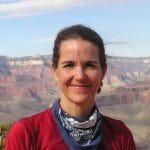
Sophie Speidel has been running ultras since 2002. She has finished over 100 ultras, including Western States 100, Massanutten 100, and Old Dominion 100 as well as the Hellgate 100k eleven times and the R2R2R of the Grand Canyon. Sophie and her husband Rusty have three adult children, ages 28, 26 and 24 who grew up watching their mom transition from road marathons and triathlons to running trail ultras — and they turned out just fine! Sophie works full-time as a school counselor, and in her free time she and Rusty are often found running and hiking with their 3-year-old Australian Shepherds, Cooper and Blue, on the trails near their home in Charlottesville, Virginia.
Share This Article!
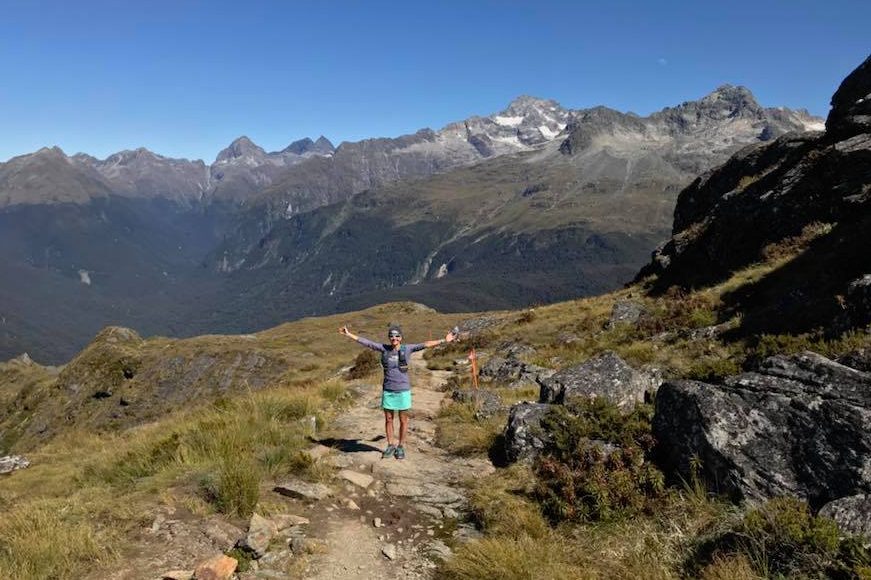
I have one week to go before the start of the Old Dominion 100. Here in central Virginia, May is blooming all around us with the sweet scents of peonies and lilacs, and the temperatures are finally rising into the 80s. “Heat training” pops into my head every time I consider these final weeks of the training cycle, along with other mantras like “steady and smart” and “rest to get ready.” I’m on the razor’s edge of 100 miler training, performing that precarious balancing act of ramping up the miles, but not too much to become overtrained; running track and tempo runs, but not too fast to get injured.

In February, I wrote about my decision to train for my fifth 100 miler, despite saying “never again!” in 2009 after death-marching across the finish line of the Grindstone 100. Why the change of heart? Alas, I turned 55 last December, and felt inspired to do something hard — something that scared me — and to test the 100 mile waters again after crewing and pacing friends on their own adventures over the years. Now, as race day on June 2 gets closer and the OD training cycle comes to an end, my feelings bounce from excitement to doubt and back again. Reflecting on the past few months of training, and imagining how I will fare in the infamous Virginia heat and humidity for 100 miles, I wonder, “What will be different this time? Will I be able to harness the experience I’ve gained in the nine years since my last 100, and be smarter about nutrition, training, and running through the night? Or will it end up being the same old, same old struggle bus to stay awake and keep moving after mile 75?”
What Is Different This Time?
Experience. People say that experience is the best teacher, and after 16 years in the sport, I agree! Since that fateful Grindstone 100 slog to the finish in 2009, I added six more Hellgate 100K finishes, including a PR at age 50 in 2012. In 2011, I completed a 3-day stage run through Shenandoah National Park, and numerous multi-day runs with my Crozet Running pals. I finished the Bighorn 54 three times in epic mud and blazing heat. But perhaps most importantly, I crewed for and paced six 100-miler finishers, including three years at Western States. Helping each runner problem-solve and adapt to the day taught me a lot more about mental preparation, nutrition, and attitude for a successful 100 finish. Last summer, I witnessed John Andersen puke his guts out at mile 62 at Western States, then get out of his chair and hang on for a sub-24 finish; in 2015, while pacing then-71-year-old Gary Knipling, I felt his attitude and determination grow stronger despite the fact that his chance for a Western States finish was slipping away by mile 85. These experiences reminded me again that anything can happen in a 100 — the key is to expect and embrace that inevitable curveball.

Smarter Training. My training for the OD100 incorporated all the lessons I’ve learned regarding what works best for by body: speedwork, tempo, hill repeats and long runs… but no more than 65-75 miles per week, with a cut-back week of about 35-40 miles every three weeks. In January, I ran early season “raise the roof” VO2 max runs designed to increase anaerobic threshold and turnover, while also following a marathon training program called, “Run Less, Run Faster” from the Furman Institute of Scientific Training (FIRST). This program stresses three quality runs a week and cross-training the other days. Given that I ran a 3:32 marathon at Richmond last November, I followed the 3:30 marathon pace workouts with a typical week looking like this: Tuesday tempo runs (6-9 miles) at 20 seconds faster than marathon pace; Thursday track workouts of 400s-1200s at sub-5K pace; and long runs at marathon pace or faster for at least 8-10 miles. The FIRST program was a fun challenge, but the hard workouts with few recovery days left me tired and toasted for the first training race of the cycle, the Holiday Lake 50K in late February. Lesson learned: I need more rest between big workouts!
Fortunately, I was able to recover in early March with hikes in the beautiful Southern Alps of New Zealand (where my husband and I went to visit our daughter). A highlight of our trip was a 20-mile thru-hike of the Routeburn Track, one of New Zealand’s Great Walks, with about 5000 feet of elevation gain and 9 hours of hiking. It was the longest hike my daughter and husband had ever completed, and I was able to use my pacing experience when both started bonking from nutrition and hydration issues. And the time on my feet at a steady pace in a stunning place was a huge bonus! On our last day in NZ, I ran a challenging trail 15K that required a mile of running IN the icy Arrow River, and two weeks later, the Charlottesville 10-miler was a perfect hilly tempo run two weeks before the Bull Run Run 50 on April 7. With no taper, BRR was a steady all-day effort three weeks before the Promise Land 50K, where I ran one of my fastest times (6:43) in my seven finishes of the race. In addition to the fitness benefits, these races set me up nicely for my mental game at OD, requiring smart fueling strategies and racing on tired legs. I must trust that I have put in the mileage necessary to get me to the finish line in Woodstock in under 24 hours!
Rest and Recovery. Some things never change — my favorite days of every long training push have always been those spent in the pool or sauna! I look forward to resting my mind from the grind of workouts, practicing mindfulness while taking care of my mobility issues with the foam roller or stretch band in the sauna. I’ve had a history of high hamstring strains during big race build-ups, so emphasis has been on “rolling out the junk” after each run, and giving myself headspace to tend to other things in my life. Strength training and swimming give me a chance to strengthen my upper body and address imbalance issues, and hiking with my hubs and our dogs is a nice way to add miles without the added pounding to my legs. Sleeping in on the weekends and taking zero days every week are also critical to training smart at my age, and as a result, I am feeling healthy heading into race day.

Empty Nesting. Having our children living away from home has been the most dramatic difference in my life since running my last 100. Everyday stress levels are significantly reduced today, compared to when the kids were in the thick of high school sports, social drama, and academic pressure. When my husband and I spent most weekends with our kids at their travel lacrosse tournaments while my ultra friends (who were empty nesters or childless) were taking in big adventures in the mountains, I felt lots of FOMO, but knew that the day would come when I had the freedom to tackle a big ultra project… as long as I was healthy enough to participate! Those weekends with the kids were pure gold, of course. In addition to priceless family time, they provided a natural break in the grind of the ultra training cycle, keeping me from getting burned out and injured, so when the time was right, I could take on a huge commitment like OD. Life stress has a real impact on my energy and focus, and I definitely feel “lighter” this time around.
Training Partners. It takes a village to get me in shape for a 100! Getting in all the different workouts, at various times of day, was so much easier knowing I had a friend ready to join me. Fortunately, my loyal running pals answered the call when I put out the requests for companionship. Jason pushed me through the tough track workouts; Michelle, a long-time friend who recently moved back to town, ran easy miles with me on Friday mornings before we hit the sauna. John was another steady track companion at 5:15 am (he was training for OD too) even when we were both ready to be done with speedwork. Joan, a fast roadie, joined me for a 15-mile “day into night” run on a humid Friday evening after we both put in a full day at work, while Harry drove out of his way to join me for 11 miles after a tough 10k tempo effort, and Jeff (my OD crew and pacer), ran a bunch of heat acclimation slogs with me, including one that started at 11:00 am in 90 degree heat on Mother’s Day.
Excitement. The four 100s that I have finished are Massanutten Mountain 100 (2005), Western States 100 (2006), and Grindstone 100 (2008/2009). These finishes taught me that to find 100 mile “success” — whether finishing under the cut-off or snagging a silver sub-24 buckle — I must really be excited about the course, the training cycle, and the challenge that it presents. Each of those races, all for different reasons, were incredibly FUN to train for. MMT was my first 100; WS was the dream 100, and Grindstone was on all my favorite local trails. If the trail is uninspiring, if life stress precludes smart training or racing, or if the desire to put myself out there isn’t burning, it’s just not going to happen. As Dylan Bowman told Mario Fraioli in this fascinating podcast last week, “at least for me, the key limiting factor to success is oftentimes how excited I am to bury myself.” OD100 is the perfect “scary thing” that will test me in all my weaknesses, and while I don’t plan to bury myself in my quest for that sub-24, I will chase that goal with confidence, determination, passion, excitement, and without fear.
About the Author

Sophie Speidel has been running ultras since 2002. She has finished over 100 ultras, including Western States 100, Massanutten 100, and Old Dominion 100 as well as the Hellgate 100k eleven times and the R2R2R of the Grand Canyon. Sophie and her husband Rusty have three adult children, ages 28, 26 and 24 who grew up watching their mom transition from road marathons and triathlons to running trail ultras — and they turned out just fine! Sophie works full-time as a school counselor, and in her free time she and Rusty are often found running and hiking with their 3-year-old Australian Shepherds, Cooper and Blue, on the trails near their home in Charlottesville, Virginia.
Share This Article!

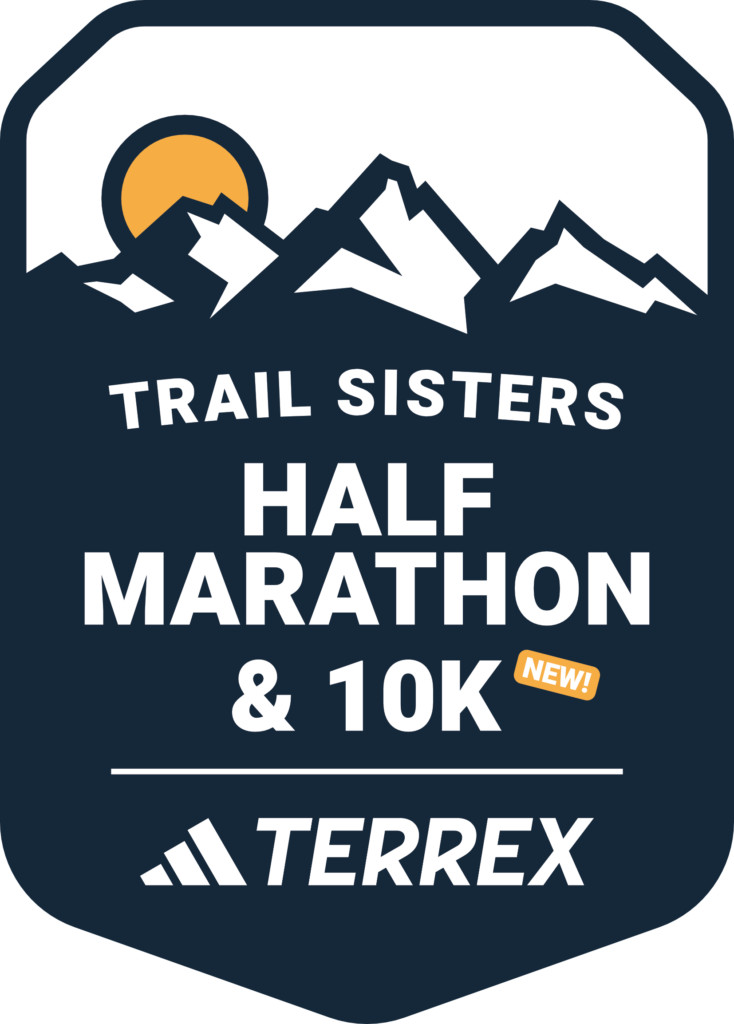
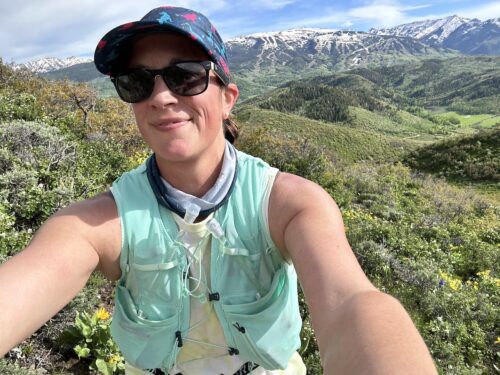
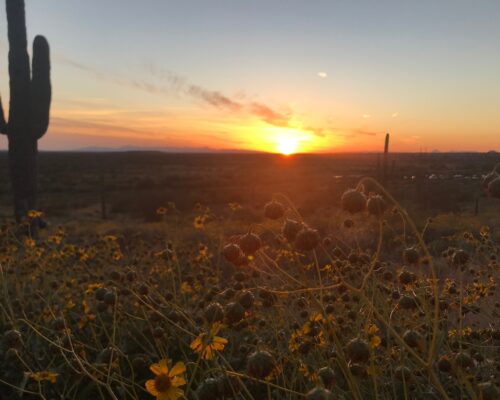

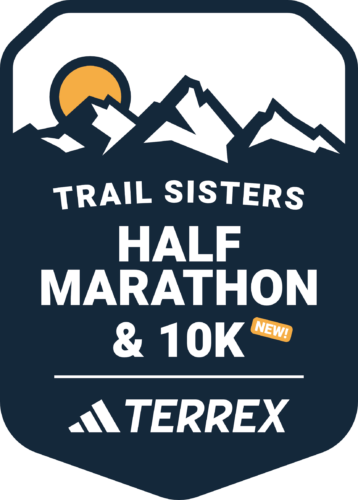
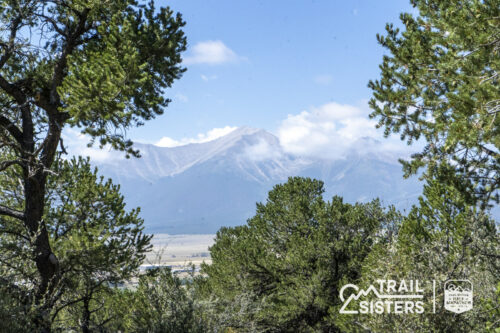
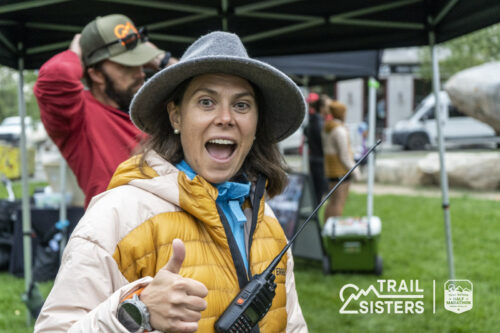
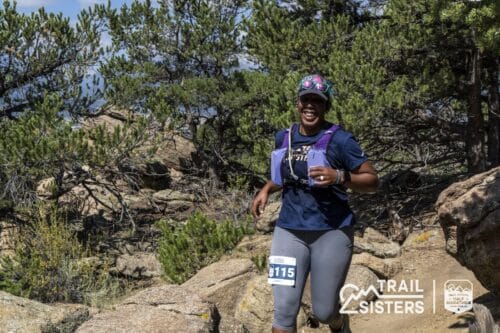
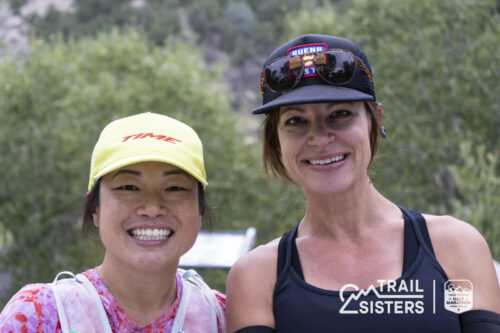
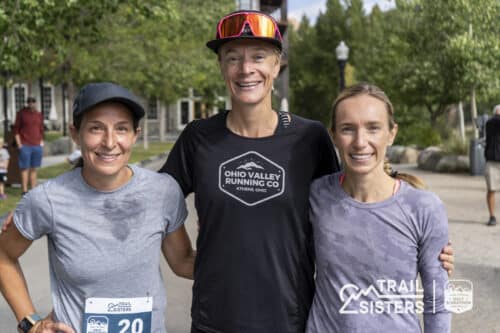
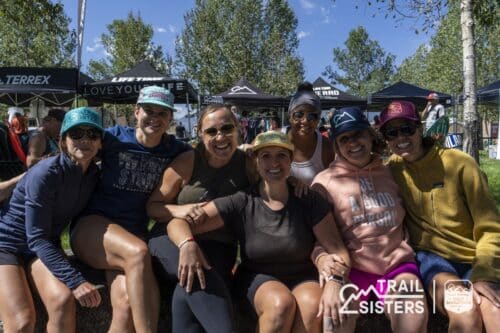
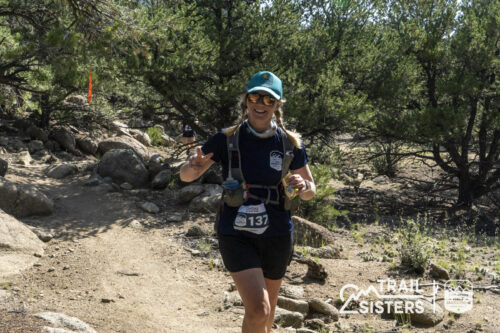
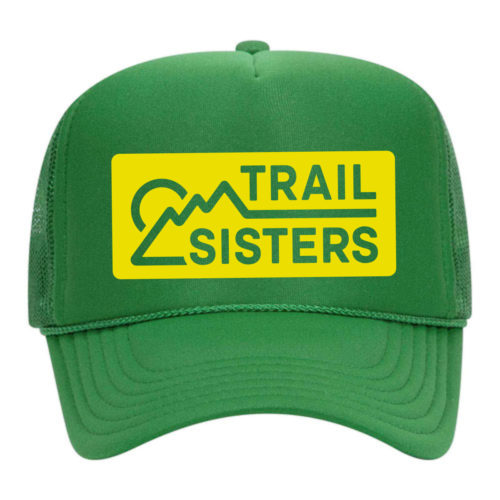
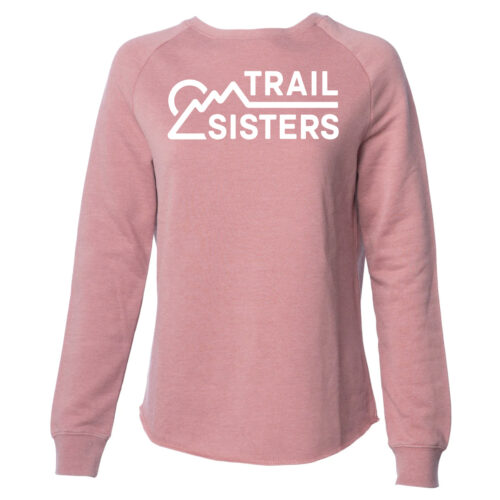
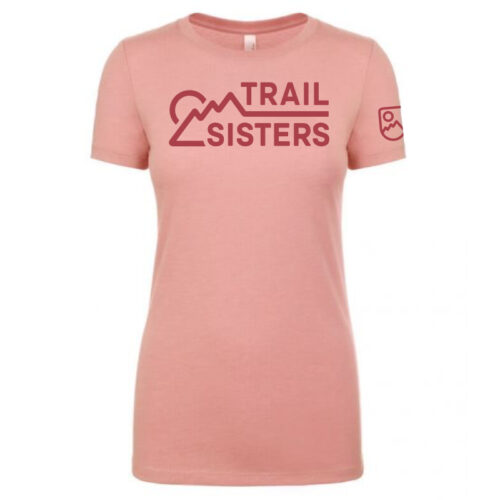
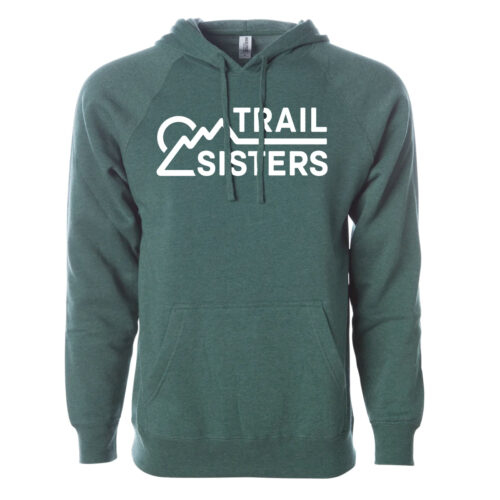



5 Responses
I’ll be thinking about you this coming weekend! Sending all the good vibes 🙂
Great post Sophie! Good luck this weekend. I’d love for you to follow up with a race report.
Thank you, Alicia and Maureen! I appreciate it!
So how did it go?? I was thinking about you & the others with the wacky weather this past weekend.
I had a great race, thanks to my awesome crew, and “good” weather for this race — cloudy, 70s and 99% humidity — until it started to pour rain around mile 70 for the next 12 hours! I finished in 23:19, 6th female, and I am now a proud owner of that coveted OD silver buckle 🙂 I’ll be writing a race report for TS soon! Thanks for asking, MJ!
ps if the rain had started even just a few hours earlier, the two big creeks we crossed would have been impassable and the race would have been halted, acc to the RD, who couldn’t sweep the course until Tuesday because of the flooding on Sunday! We were lucky.